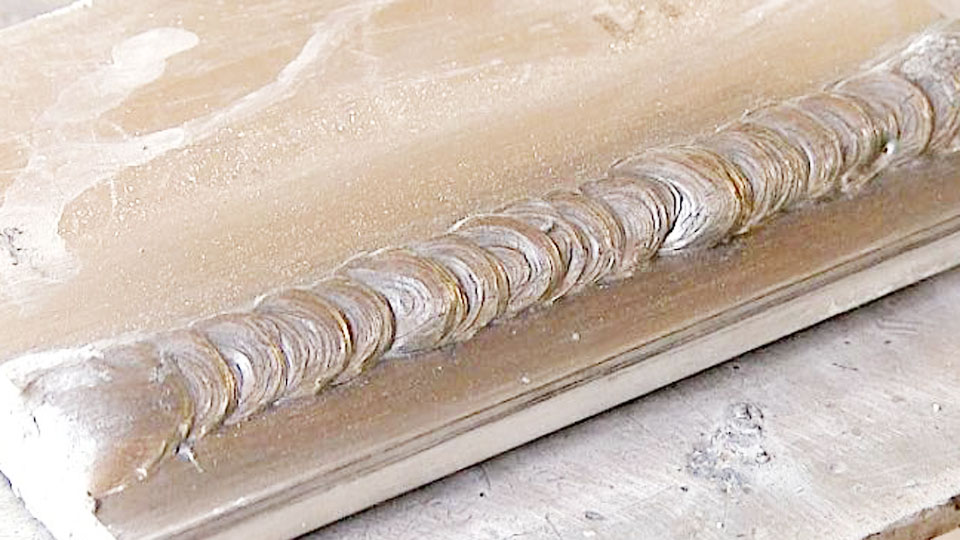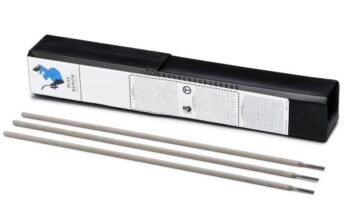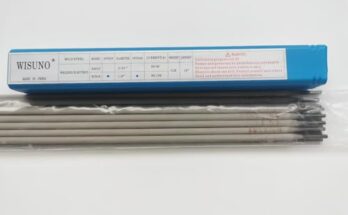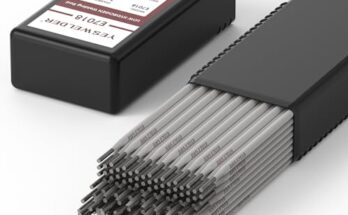Welding aluminum with a stick welder isn’t the easiest process, but it can be done if you have the right settings and techniques. Many welders prefer MIG or TIG welding for aluminum because of the precise heat control, but sometimes stick welding is the only option, especially in outdoor or field conditions.
If you’re planning to stick weld aluminum, understanding the correct settings and preparation steps will make all the difference in achieving strong, clean welds.

Image by weldingtipsandtricks
I’ve worked with aluminum using various welding processes, and while stick welding isn’t my first choice for this metal, it’s definitely possible with the right approach. In this article, I’ll walk you through the best settings and techniques to use when stick welding aluminum so you can get the best results.
Why Stick Welding Aluminum is Challenging
Aluminum is very different from steel when it comes to welding. It has a lower melting point but a higher thermal conductivity, meaning it absorbs and dissipates heat quickly.
This makes it harder to maintain a steady weld puddle without burning through the material. Additionally, aluminum forms an oxide layer that melts at a much higher temperature than the base metal, which can interfere with proper fusion.
Stick welding, or Shielded Metal Arc Welding (SMAW), is not the most common method for aluminum because it doesn’t offer as much precision as TIG welding. It is useful in certain situations, such as outdoor welding or working with thicker aluminum sections.
Best Electrode for Stick Welding Aluminum
To successfully stick weld aluminum, you need the right electrode. Unlike steel, which has multiple options, aluminum welding requires a specific type of electrode.
The most commonly used electrode for aluminum stick welding is E4045 or E4047, with E4045 being the most popular. These electrodes contain a high percentage of silicon, which helps improve the fluidity of the weld and reduces cracking.
| Electrode Size | Recommended Material Thickness |
|---|---|
| 1/8 inch (3.2mm) | 1/8 inch to 3/16 inch aluminum |
| 5/32 inch (4mm) | 3/16 inch to 1/4 inch aluminum |
| 3/16 inch (4.8mm) | 1/4 inch and thicker aluminum |
Choosing the right electrode size based on the aluminum thickness is crucial for getting strong welds.
Correct Polarity for Stick Welding Aluminum
Polarity plays a major role in stick welding aluminum. You need to set your welder to DCEP (Direct Current Electrode Positive), also known as reverse polarity. This setting provides deeper penetration and helps break through the aluminum oxide layer, which is essential for proper fusion.
Using DCEN (Direct Current Electrode Negative) will not provide enough heat to melt the oxide layer, leading to weak welds. If you’re having trouble with penetration or excessive spatter, double-check your polarity settings.
Best Amperage Settings for Stick Welding Aluminum
The correct amperage setting depends on the thickness of the aluminum and the size of the electrode. Here’s a general guideline:
| Electrode Size | Recommended Amperage |
|---|---|
| 1/8 inch (3.2mm) | 80-120A |
| 5/32 inch (4mm) | 100-150A |
| 3/16 inch (4.8mm) | 140-180A |
If you set the amperage too low, you won’t get good penetration, and the electrode might stick to the workpiece. If it’s too high, you risk burning through the material or creating excessive spatter.
Prepping Aluminum for Stick Welding
Unlike steel, aluminum needs extra preparation before welding. If you skip these steps, you’ll end up with contaminated welds that are weak and full of defects.
Remove the Oxide Layer – Aluminum naturally forms an oxide layer that melts at a much higher temperature than the base metal. Use a stainless steel wire brush or a chemical aluminum cleaner to remove it before welding.
Clean the Surface – Any dirt, grease, or oil on the aluminum will lead to contamination. Wipe down the area with acetone or a similar degreaser before welding.
Preheat the Material – Aluminum dissipates heat quickly, making it harder to maintain a stable weld puddle. Preheating the metal to around 300-400°F (150-200°C) can help improve weldability, especially for thicker sections.
Secure Your Workpiece – Aluminum is softer and more prone to movement when heated. Clamping your material in place will help maintain alignment and prevent distortion.
Welding Techniques for Stick Welding Aluminum
Because stick welding aluminum is different from steel, you’ll need to adjust your technique to avoid excessive spatter and weak welds.
Use a Fast Travel Speed – Aluminum melts quickly, so you need to move faster than you would when welding steel. If you move too slowly, you’ll end up with burn-through.
Maintain a Short Arc Length – A shorter arc length (about 1/8 inch from the workpiece) helps keep the arc stable and prevents excess spatter.
Keep the Electrode at a Slight Angle – Holding the electrode at a slight push angle (10-15 degrees) helps control the weld puddle and improves penetration.
Use Stringer Beads Instead of Weaving – Weaving is common in steel welding but should be avoided when welding aluminum with a stick welder. Instead, use straight stringer beads for better control.
Common Issues and How to Fix Them
Despite using the right settings and techniques, you might run into some common problems. Here’s how to fix them:
| Issue | Cause | Solution |
|---|---|---|
| Porosity (holes in the weld) | Contaminated aluminum | Clean surface with acetone and wire brush before welding |
| Excessive spatter | Too high amperage | Lower amperage slightly and use a shorter arc length |
| Poor penetration | Low amperage or wrong polarity | Increase amperage and ensure you’re using DCEP |
| Burn-through | Moving too slowly | Increase travel speed and reduce heat input |
Post-Weld Cleaning and Finishing
Stick welding aluminum produces a thick layer of slag that must be removed after welding. Use a wire brush or chipping hammer to clean the slag, followed by a light polish with a stainless steel brush. This will help improve the appearance of the weld and prevent corrosion.
Conclusion
Stick welding aluminum isn’t the easiest method, but with the right settings and preparation, it can be done successfully. Using the correct electrode, amperage, and polarity settings is crucial, as is properly cleaning and preheating the aluminum. While the process takes practice, understanding these settings and techniques will help you produce strong, clean welds.
If you’re new to welding aluminum with a stick welder, don’t get discouraged if your first few attempts don’t turn out perfect. Keep experimenting with settings and techniques until you find what works best for your specific project. With patience and practice, you’ll be able to weld aluminum effectively, even with a stick welder.
FAQs
Can I stick weld aluminum with a regular steel electrode?
No, you need a special aluminum electrode like E4045 or E4047. Regular steel electrodes won’t work on aluminum.
Why is my aluminum weld full of holes?
This is likely due to contamination. Make sure to clean the aluminum thoroughly with acetone and a wire brush before welding.
Do I need to preheat aluminum before stick welding?
Yes, preheating to 300-400°F helps improve weldability, especially for thicker aluminum.
What is the best polarity for stick welding aluminum?
Use DCEP (Direct Current Electrode Positive) for better penetration and to break through the oxide layer.
Why is stick welding aluminum harder than MIG or TIG?
Stick welding lacks the precise heat control of TIG and the smooth feeding of MIG, making it harder to control the weld pool and avoid defects.


